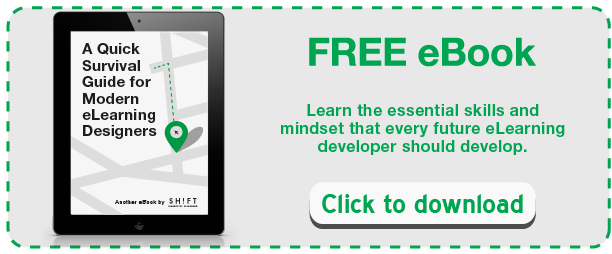As eLearning designers, we have to wear many hats and juggle multiple tasks. We write storyboards, interact with clients and SMEs, coordinate with team members from multiple functions, keep an eye on how the course is shaping up, and ensure the project sticks to the schedule. Oh yes, most of us work on more than one project at a time. Of course, we are expected to be on top of our games and be productive always. It is easier said than done. But, there's nothing that you cannot achieve with sincerity, patience, and a wee bit of effort.
You just have to make small changes at work and shift certain thought patterns to become more productive. Below are some ways of becoming more productive. Not all may work for you, but it never hurts to try.

1) Create plans (and lists) for the next day the night before
A to-do list keeps you on track as you move towards your goals. It is even better if you create tomorrow's to-do list today just before you retire for the night. Let this be a time for introspection and reflection as well when you can mull over your goals, measure your progress, and re-prioritize (if needed) before setting next day's agenda. When you start your day with an agenda clearly in place, you are less likely to be waylaid by the demands of others and end up upsetting your plans.
There are plenty of tools to help you create digital lists. Try Wunderlist or Evernote. But a pen and a scrap paper or your Moleskin will also suffice.
2) Find out when you are most creative and schedule tasks accordingly
We all have certain times in the day when we are at our best and brightest. Some are morning people, others are night owls. Some others have creativity spurts in the afternoon. Find out when you are at your peak, and (try to) schedule creative tasks at these hours.
If you are not sure, try working at a task in the morning for about two weeks. Then find yourself a similar task and work on it at night for another two weeks and so on. Keep a tab on your performance at different times of the day.
You can use a tool like RescueTime to plot the data and analyze it. Beware that there might not be drastic differences in your performance.
Here is a hack from the productivity ninjas. They tackle the hardest tasks when their minds are fresh, which is usually before lunch, and schedule meetings in the afternoon.
3) Say no more often
Saying yes to everyone may make you a nicer person, but the habit will jeopardize your productivity.
If you bite into more food than what you can chew, you eventually choke up. It is no different with your eLearning projects.
You can do only so much. If you take up every project that comes your way, you will be stretched too thin. When you are pulled in too many directions, you cannot focus on the task at hand. The result: you miss deadlines and the quality of your work suffers.
Learn to value your time. Become aware of your capabilities. Then tell yourself it is okay to say no and pass up a project, however lucrative it may be, rather than take it up and then fail to deliver to a high standard.
4) Use technology
If you have them, why not use them. We are talking of technology, the various apps that let you manage your time, track your progress, schedule and organize your tasks, and remind you with alerts and notifications that you are lagging behind. There are a slew of tools out there to help you with these tasks, so you can be more productive.
- Don't be fooled by its name; the Slack app lets you arrange all your professional communications in one place with instant search facilities.
- Precursor is a Web-based rapid prototyping app that lets you create interactive demos in a jiffy.
- Chronus is a time-tracking app.
- WorkLife is the ideal app for turning your meetings into more productive sessions by automatically setting and sharing agendas.
5) Use project management tools
Developing an eLearning course is a complex process made up of several equally challenging sub-tasks—organizing the instructional material, keeping sundry notes and references gathered in one place, creating lists of the tasks involved, assigning tasks to different team members and keeping track of their progress or that of your own.
Project management tools like Trello let you organize in one place all the tasks associated with one project, so you don't lose track of them when you have to juggle multiple projects. Asana lets you collaborate with others on the project easily and effortlessly.



